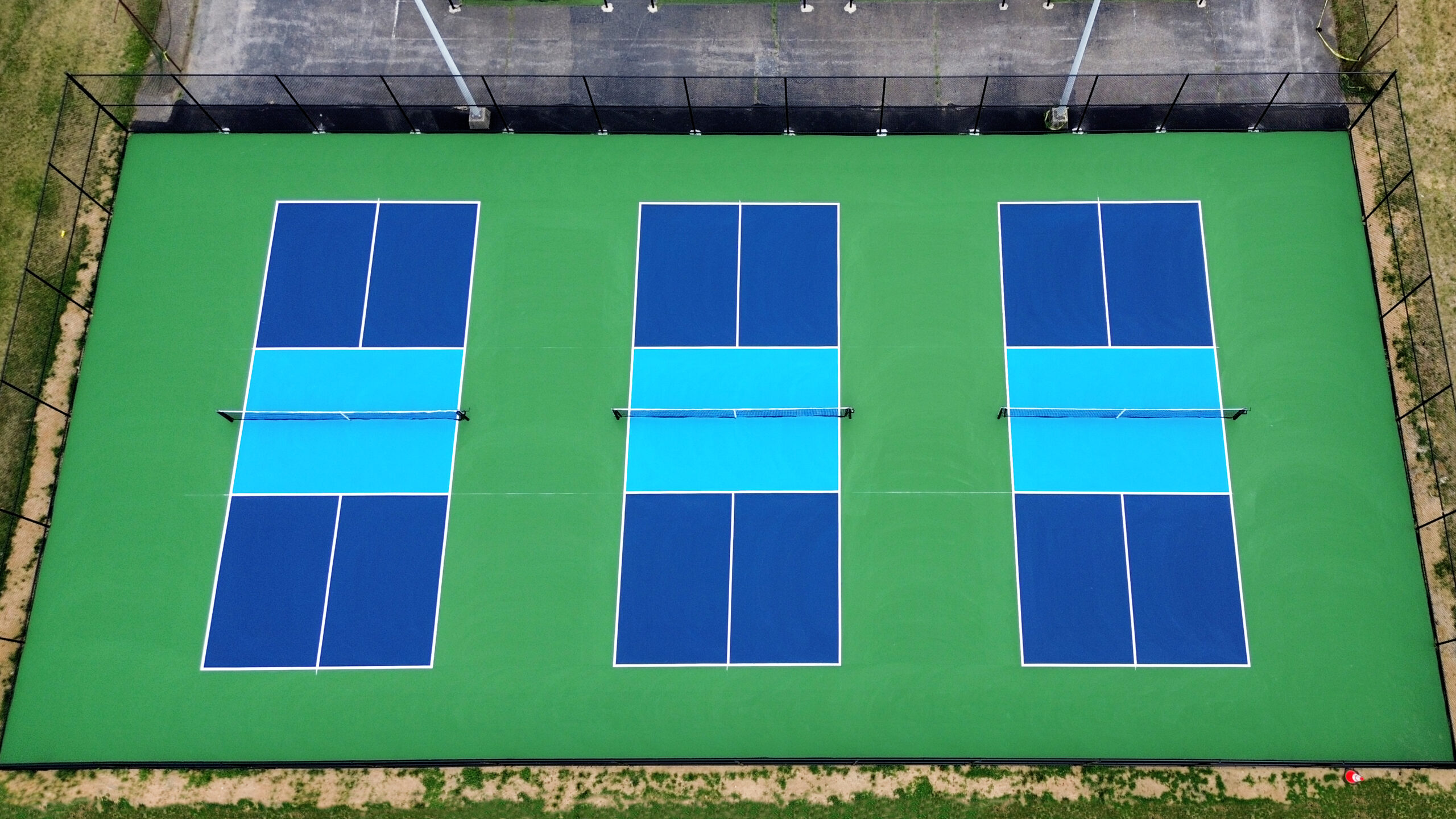Sustainable Practices in Pickleball Court Construction You Must Know
As the popularity of pickleball continues to climb, so too does the need for sustainable techniques in court building. This method not just addresses ecological concerns but likewise improves the longevity and functionality of the courts. From choosing environment-friendly materials to implementing reliable water drainage and energy-saving lights remedies, there are various strategies to consider. The impact of these practices extends far past the court itself. Recognizing how each element contributes to a more sustainable future welcomes further exploration right into the detailed balance between recreational development and ecological stewardship.
Choosing Eco-Friendly Products
Choosing eco-friendly materials is a crucial action in the construction of lasting pickleball courts. The selection of sustainable products not just lessens ecological effect however likewise improves the longevity and efficiency of the court. Secret materials consist of reused rubber for the surface area, which uses superb toughness and shock absorption while drawing away waste from garbage dumps.
Additionally, using in your area sourced products minimizes transport emissions and supports local economies. Pickleball court construction. For instance, using native hardwoods for fencing and seats can provide a lasting visual while making sure durability against the components.
Integrating permeable materials for court structures can further add to sustainability by permitting all-natural water drain and minimizing overflow. These choices not just secure local ecological communities yet additionally promote much healthier play environments.
Effective Drainage Solutions
While the option of green materials is vital, applying reliable water drainage options is similarly crucial for maintaining sustainable pickleball courts. Proper drain not just protects the court surface from water damages but likewise minimizes disintegration and drainage, promoting environmental honesty.
Reliable drain systems can consist of absorptive paving, which allows water to infiltrate the ground instead of pooling externally. This reduces the possibility of standing water, which can bring about mold and other upkeep concerns. Furthermore, including purposefully placed drain networks and swales can route excess water away from the court area, making sure a dry playing surface and protecting against soil disintegration.
Making use of native vegetation in the landscaping around the courts can better boost water drainage by soaking up excess water and reducing runoff. These plants call for less watering and promote biodiversity, straightening with sustainable practices.
Moreover, it is essential to frequently maintain the drain system to ensure its long-lasting performance. This includes cleaning particles and surveillance for clogs. By prioritizing effective drain remedies, pickleball court builders can considerably add to the sustainability and durability of the center, ultimately benefiting both players and the environment.
Energy-Efficient Illumination Options
As the demand for pickleball continues to grow, integrating energy-efficient lighting alternatives into court layout has actually come to be progressively essential for sustainability. Typical illumination systems typically take in excessive power, adding to greater functional prices and environmental effect. Taking on modern, energy-efficient technologies is important for both new buildings and restorations.
LED (Light Emitting Diode) illumination sticks out as a leading option because of its durability and energy savings (Pickleball court construction). Contrasted to conventional lighting, LEDs use approximately 75% much less power and can last up to 25 times much longer, substantially lowering maintenance expenses. Moreover, the directional nature of LED illumination lessens light pollution, ensuring that lighting is concentrated on the court as opposed to bordering areas.

Sustainable Surface Area Alternatives
Exploring continue reading this sustainable surface area options for pickleball courts has gained traction among home builders and gamers alike. The focus on environmentally friendly materials not only aligns with the growing environmental awareness however additionally enhances the performance and toughness of the courts.
This product provides exceptional shock absorption, minimizing the risk of injuries for gamers while promoting sustainability. try this site These ceramic tiles are very easy to install and change, and their convenience enables for various court arrangements.
All-natural turf courts are additionally becoming a lasting choice, promoting biodiversity and minimizing the heat island impact. Nonetheless, they require routine maintenance and water, which might not straighten with all sustainability goals.

Water Conservation Techniques

Another reliable strategy includes the installation of rain harvesting systems. These systems collect and save rainwater for usage in maintaining court surfaces and landscape design. This technique not just preserves drinkable water yet likewise decreases dependence on local resources.
Furthermore, utilizing drought-resistant landscape design around the courts is necessary. Indigenous plants require much less water and are better adjusted to local climate problems, thus reducing overall water intake. Furthermore, making use of reliable watering systems, such as drip watering, makes certain that water is delivered directly to plant roots, lessening dissipation and waste.
Verdict
Incorporating sustainable methods in pickleball court building dramatically adds to environmental conservation and source performance. Making use of eco-friendly materials, implementing effective drainage solutions, and adopting energy-efficient illumination choices can significantly minimize environmental influence. Discovering lasting surface area alternatives and employing water preservation methods improve the total sustainability of these leisure facilities. By focusing on these methods, the construction of pickleball courts can straighten with broader ecological goals while promoting longevity and capability within areas.
As the popularity of pickleball proceeds to increase, so also see this site does the need for lasting practices in court building.Choosing environmentally friendly materials is a crucial action in the building and construction of lasting pickleball courts. By focusing on energy-efficient lights options, pickleball court fitters can add to a much more sustainable future while meeting the requirements of gamers and stakeholders alike.Including lasting surface options not just improves the performance of pickleball courts but also paves the way for implementing reliable water preservation strategies.Integrating sustainable techniques in pickleball court building and construction significantly adds to environmental preservation and source effectiveness.